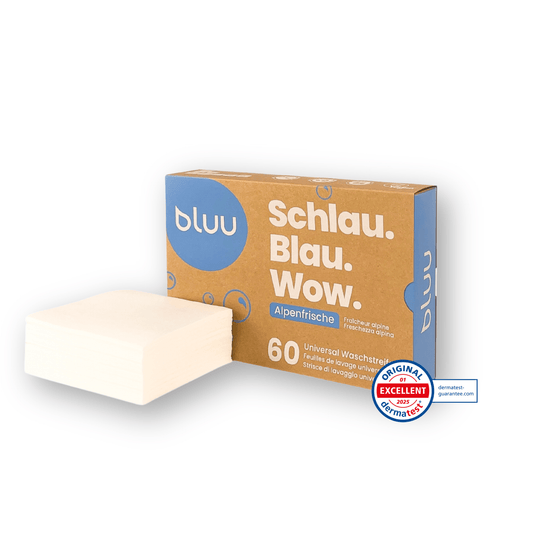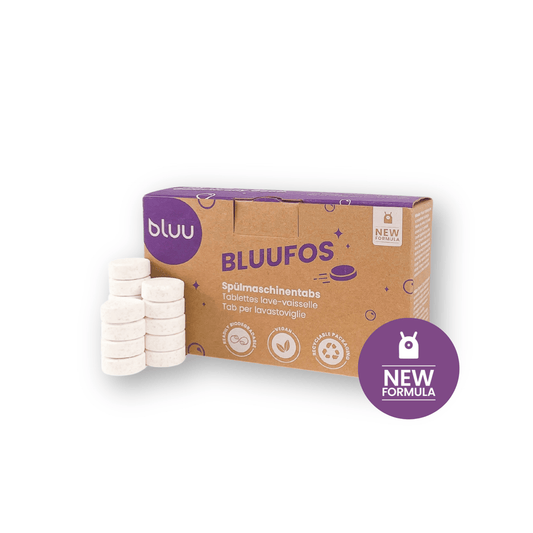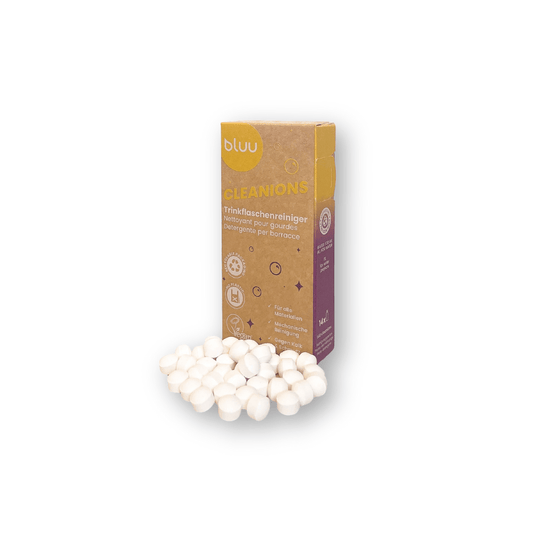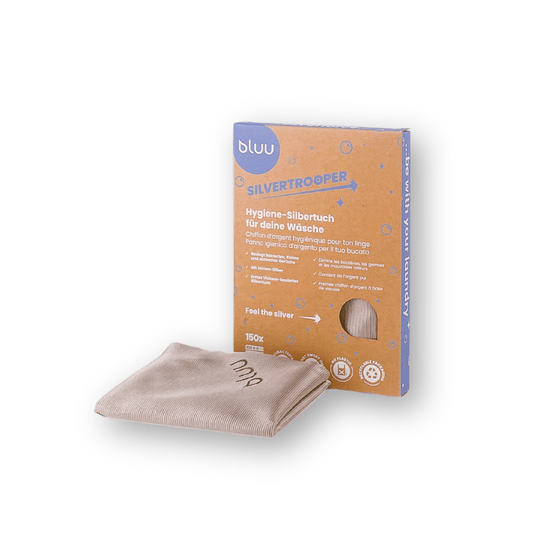There are surprisingly many things you can do wrong when washing. We reveal the eight biggest washing mistakes and tell you how you can not only get your laundry clean, but also save water and electricity.
#1 Filling incorrectly
You can fill your washing machine too much or too little. Neither is ideal.
If you have too much laundry in the drum, it will get too tangled and prevent the water from running through properly or really reaching all areas. The laundry may not get properly clean.
A washing machine that is only half full wastes energy, water and detergent.
The following rule of thumb applies when filling your washing machine:
A raised, splayed hand should definitely still fit into the drum above the laundry.
There are exceptions here too: For delicates or wool, the washing drum should be filled to a maximum of half full so that the clothes don't rub so hard against each other.

#2 Using too much detergent
Anyone who thinks that using too much detergent is not a problem is mistaken. More detergent does not mean that the laundry will be cleaner. On the contrary, too much detergent leads to...
- Under certain circumstances, the laundry cannot be rinsed out properly and therefore dirt and grease particles get stuckwhich start to stink over time.
- Detergent residues remain on the clothes. This can damage not only your clothes but also your skin.
- Your water consumption increases. If there is too much foam in the drum, the washing machine pumps in more water.
- You spend more money: The more detergent you need, the sooner you have to buy new ones.
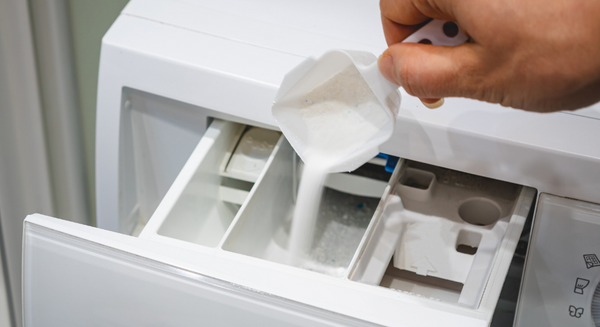
#3 Using too little detergent
If you use too little detergent, the opposite is true. Your laundry won't get properly clean, which ultimately also means that your laundry not only smells, but also remains dirty.
In addition, limescale will build up in your clothes more quickly and wear out faster.
Tips:
- Determine the water hardnessThe harder the water, the more detergent you need.
- Follow the instructions on the pack: Every detergent pack tells you how much detergent to add per kg of laundry.
By the way: You can make dosing easier for yourself with the bluu washing strips can save you dosing: The strips are already pre-dosed and just right for your laundry.

#4 Wrong wash program
Nowadays, washing machines offer countless different washing programs and combination options: you can choose the program, temperature and spin speed yourself.
If you use the wrong program for your clothes, they may discolour, shrink or suffer other irreparable damage.
To prevent this from happening to you: Pay attention to the care label! This usually tells you everything you need to know about caring for your garment. Also check the operating instructions for your washing machine: they will tell you which washing program is suitable for what.
Roughly speaking
- Bed linen and towelling: 60 degrees
- Normally soiled clothing: 30 to 40 degrees
- Delicates: 30 degrees
- Wool and silk clothes: 30 degrees
- Synthetic laundry: 30 degrees
Tip: If the label says 30 degrees, then the laundry can really only tolerate this temperature and not the 40 degree wash program instead. This minimal difference can be decisive.

#5 Wash with prewash
Used to make sense, now mostly superfluous: With normally soiled clothes, your washing machine will cope wonderfully without a prewash program.
If your clothes are very dirty, you are usually better off using household products such as curd soap or baking soda and not wasting electricity and water unnecessarily. You can do without pre-washing.
#6 Do not clean the dryer and machine
Just like your clothes, your washing machine and dryer also need care and attention. You need to clean them regularly.
If you don't, the following can happen:
- The machine and the freshly washed laundry start to stink.
- Germs and bacteria build up.
- Limescale builds up.
- Energy consumption is increased.
- The service life of the machine decreases.
You can find out how to descale your washing machine in this blog.
#7 Use a short wash program
You have probably also saved a short wash or eco program on your washing machine. Unfortunately, the name doesn't quite live up to its promise.
The eco program requires less water, but all the more electricity! This is because the machine needs more time to get the laundry clean with less water.
It's even worse with the quick wash program: to make everything ultra-fast, the washing machine needs a much larger amount of water AND energyto get the laundry clean.
That's why: Only use the quick wash program if you have to.
#8 Use a tumble dryer
Sure, a tumble dryer is super practical: put the laundry in, switch it on, take it out.
But: The tumble dryer is usually one of the biggest power guzzlers in your home. And puts unnecessary strain on your clothes.
That's why it's better to hang up your laundry. Especially in summer (if it's sunny and dry), the laundry dries in a flash.
Tip: If you still prefer to use the dryer, don't wait between drying phases. If the dryer is already running at full speed and is still warm from the last load of clothes, it requires less energy for the next one.
You can find out more about the advantages and disadvantages of the tumble dryer and washing line here.

